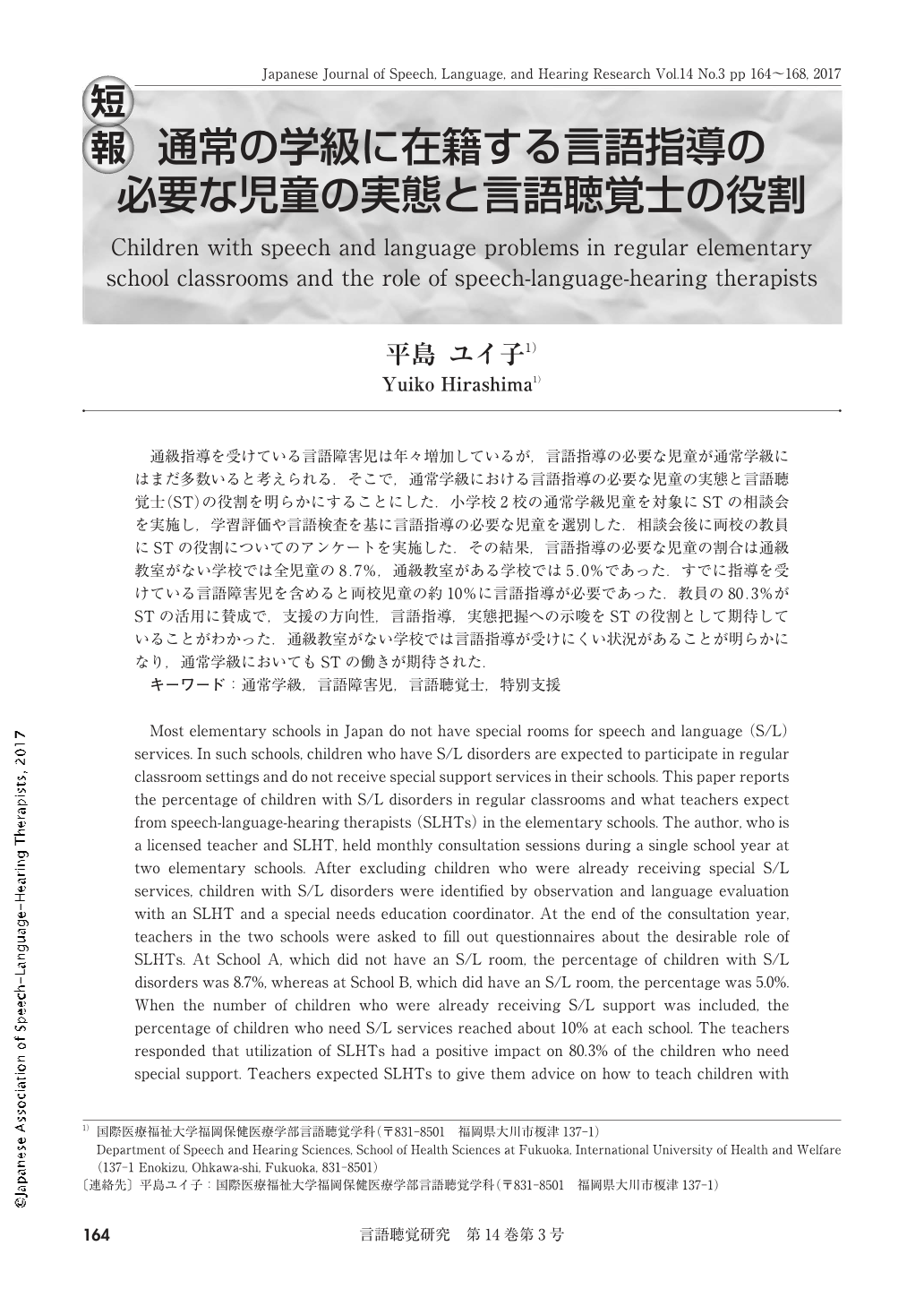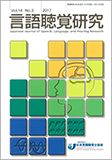Japanese
English
- 有料閲覧
- Abstract 文献概要
- 1ページ目 Look Inside
- 参考文献 Reference
通級指導を受けている言語障害児は年々増加しているが,言語指導の必要な児童が通常学級にはまだ多数いると考えられる.そこで,通常学級における言語指導の必要な児童の実態と言語聴覚士(ST)の役割を明らかにすることにした.小学校2校の通常学級児童を対象にSTの相談会を実施し,学習評価や言語検査を基に言語指導の必要な児童を選別した.相談会後に両校の教員にSTの役割についてのアンケートを実施した.その結果,言語指導の必要な児童の割合は通級教室がない学校では全児童の8.7%,通級教室がある学校では5.0%であった.すでに指導を受けている言語障害児を含めると両校児童の約10%に言語指導が必要であった.教員の80.3%がSTの活用に賛成で,支援の方向性,言語指導,実態把握への示唆をSTの役割として期待していることがわかった.通級教室がない学校では言語指導が受けにくい状況があることが明らかになり,通常学級においてもSTの働きが期待された.
Most elementary schools in Japan do not have special rooms for speech and language (S/L) services. In such schools, children who have S/L disorders are expected to participate in regular classroom settings and do not receive special support services in their schools. This paper reports the percentage of children with S/L disorders in regular classrooms and what teachers expect from speech-language-hearing therapists (SLHTs) in the elementary schools. The author, who is a licensed teacher and SLHT, held monthly consultation sessions during a single school year at two elementary schools. After excluding children who were already receiving special S/L services, children with S/L disorders were identified by observation and language evaluation with an SLHT and a special needs education coordinator. At the end of the consultation year, teachers in the two schools were asked to fill out questionnaires about the desirable role of SLHTs. At School A, which did not have an S/L room, the percentage of children with S/L disorders was 8.7%, whereas at School B, which did have an S/L room, the percentage was 5.0%. When the number of children who were already receiving S/L support was included, the percentage of children who need S/L services reached about 10% at each school. The teachers responded that utilization of SLHTs had a positive impact on 80.3% of the children who need special support. Teachers expected SLHTs to give them advice on how to teach children with S/L disorders and to give the children special lessons. In the schools without an S/L room, use of an SLHT seemed to have a greater effect, because many children with S/L disorders were underserved at the time of the study.

Copyright © 2017, Japanese Association of Speech-Language-Hearing Therapists. All rights reserved.


